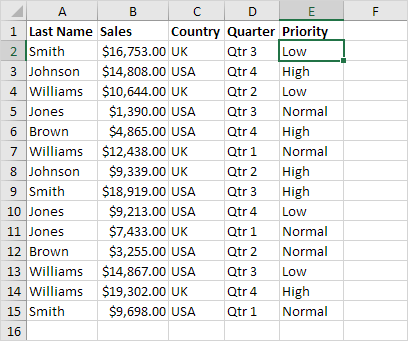5 Tips to Power Up Your Excel Sheets

Microsoft Excel is one of the most widely used tools for data manipulation and analysis. Whether you're a seasoned professional or a beginner, there are always new tips and tricks to make your work more efficient. Here are five powerful tips to enhance your Excel skills and productivity:
1. Utilize Excel Shortcuts

Keyboard shortcuts are a game-changer in Excel, drastically reducing the time you spend on repetitive tasks. Here are some essential shortcuts you should know:
- Ctrl + C for copy
- Ctrl + V for paste
- Ctrl + Z for undo
- Alt + E, S, V for pasting values
- Ctrl + Shift + L to toggle the filter
- Ctrl + Home to return to cell A1 instantly
- Ctrl + Arrow Keys to navigate to the end of data regions
Learning these shortcuts not only speeds up your workflow but also makes you less dependent on the mouse, which is often less efficient.
2. Data Validation for Consistency

Data validation is crucial for maintaining data integrity within your Excel sheets. Here's how you can set it up:
- Select the Cell or Range: Choose where you want to apply data validation.
- Go to Data > Data Validation: In the ribbon, select "Data Validation."
- Set Validation Criteria: Under the "Settings" tab, you can choose from different criteria like lists, dates, numbers, etc.
- Create an Input Message: (Optional) Provide a message to guide users when they select the cell.
- Error Alert: (Optional) Set up custom messages for when invalid data is entered.
This feature not only helps in controlling data entry but also reduces errors significantly, ensuring your data analysis is based on clean data.
3. Conditional Formatting for Instant Insights

Conditional formatting can turn your data into visual insights with colors, icons, or data bars. Here's how to apply it:
- Select the Range: Where you want the formatting to apply.
- Go to Home > Conditional Formatting: In the ribbon.
- Choose a Rule: Options include highlighting cell rules, top/bottom rules, data bars, color scales, and icon sets.
- Set Up Rules: Define conditions like "greater than," "less than," or specific text rules.
💡 Note: Always keep your data clean and organized before applying conditional formatting for the best results.
4. PivotTables for Dynamic Analysis


PivotTables are incredibly powerful for summarizing and analyzing large datasets. Here's how to create one:
- Select Your Data: Click anywhere within your dataset or select the entire range.
- Go to Insert > PivotTable:
- Choose Where to Place the PivotTable: Either in a new worksheet or an existing one.
- Drag and Drop Fields: Into the Rows, Columns, Values, and Filters areas to organize your data as desired.
💡 Note: Ensure your data has no empty rows or columns for accurate PivotTable operation.
5. Macros for Automation

Macros allow you to automate repetitive tasks with VBA (Visual Basic for Applications). Here are the basic steps to record a macro:
- Enable the Developer Tab: Go to Excel Options > Customize Ribbon > Check "Developer."
- Go to Developer > Record Macro: Give it a name, a shortcut key, and where to store it.
- Perform the Actions: You want to automate (e.g., formatting cells, entering data).
- Stop Recording: Click 'Stop Recording' to save your macro.
- Run Your Macro: Use the assigned shortcut key or access it through Developer > Macros.
Learning to use macros can save hours of repetitive work and significantly boost productivity.
Summing Up

By integrating these tips into your Excel workflow, you can significantly enhance your productivity and data analysis capabilities. Shortcuts will speed up your navigation, data validation will ensure your data's integrity, conditional formatting will provide visual cues for data analysis, PivotTables will allow for dynamic data summarization, and macros will automate your repetitive tasks. Remember, the key to mastering Excel is consistent practice and exploring these features in depth. Whether you're tracking expenses, managing large datasets, or creating reports, these tools will make your Excel experience more efficient and insightful.
What is the best way to learn Excel shortcuts?

+
The best way to learn Excel shortcuts is through consistent use, creating cheat sheets, and using online tutorials or resources that list and explain shortcuts.
How can conditional formatting be used to highlight specific data?

+
Conditional formatting can highlight data by setting rules for cell color changes based on their value, date, or other criteria. For instance, you can color-code negative numbers red or highlight top performers in sales data.
Can you share examples of when to use a PivotTable?

+
Use PivotTables for summarizing sales data by region, analyzing survey results, tracking monthly expenses, or comparing performance across different categories or time periods.
Are macros secure?

+
Macros can be secure if sourced from trusted places, and Excel has security settings to control macro execution. However, be cautious with macros from unknown sources as they can contain harmful code.